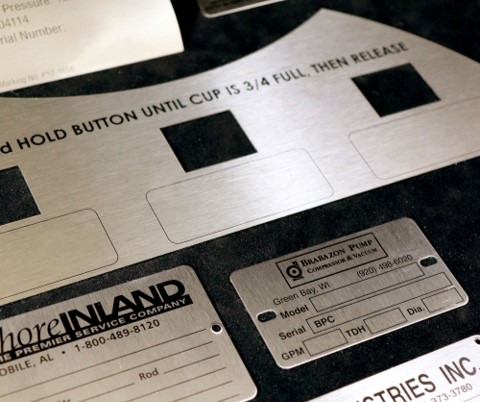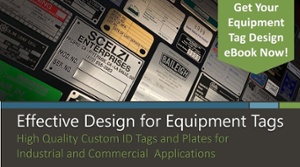Many industrial environments have equipment that is exposed to chemicals, weather extremes, heavy handling, and dirt. Choosing the right processing and materials for ID plates minimizes the risk of critical information not being visible or the data plate wearing away. A variety of metal and flexible material options is stocked to provide the right protection along with the functionality, durability, and custom decoration needed for your design.
Here are the common material choices along with attachment methods for equipment tags, data plates, and ID plates.
Material |
Thickness and Finish |
|
Aluminum
|
.002" Matte and Bright Foil .012"-.032" Mill Finish and Bright .012"-.063" Anodized .062"-.090" Mill Finish |
|
Stainless Steel
|
.018"-.036" Brushed |
|
Polycarbonate
|
.005"-.030" Clear, Velvet, Weatherable |
|
Polyester
|
.002" White, Clear, Matte Silver, Brushed Silver, Bright Silver, Imprintable, Reflective .005"-.010" Clear |
|
Vinyl
|
.002"-.004" Standard .007" Static Cling .010"-.065" Rigid |
|
Attachment Methods
|
|
|
Adhesives
|
3M and equivalent pressure sensitive adhesives |
|
Holes or Slots
|
Secure attachment with rivets or screws |
|
Combination
|
Some applications will require more robust attachment solutions which can include combining pressure sensitive adhesive with rivets or screws. |
How Can We Help?
Determining the right material and attachment for your ID plates takes an understanding of the application and type of equipment. We have a team of experienced professionals ready to work with you to achieve an effective and durable equipment tag that will last.
Related Posts
Style Options for Metal Plates and Tags
Outdoor Metal Nameplates eBook
Customized Durable Safety Labels eBook
ID Plates: Application & Design eBook



